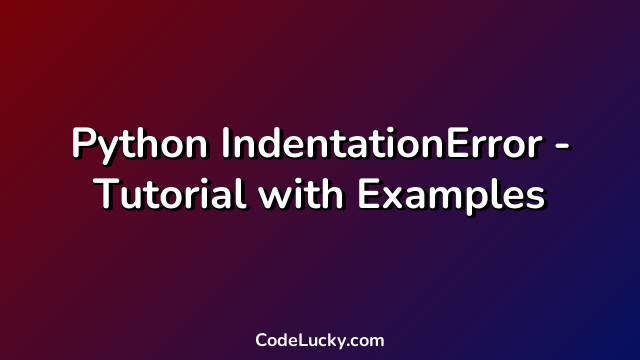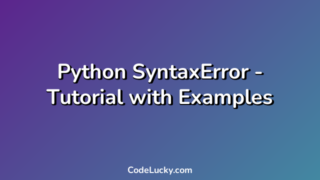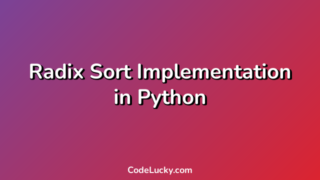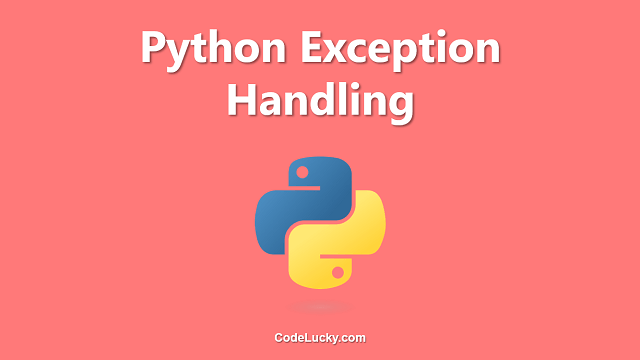Indentation is a significant aspect of Python language. In Python, instead of distinguishing code blocks with curly braces or tokens, it engages white space or indentation. This feature, which distinguishes Python from other language, makes Python code more clear, readable, and easy to understand.
Indentation is created by adding spaces or tabs to the beginning of the line. The number of spaces or tabs in each line should always be the same within the same block.
Despite the benefits that indentation can bring, indentation errors are still one of the most prevalent beginner Python errors. This article aims to explain Indentation Error in Python, why it is caused, and how to resolve it.
What is Indentation Error?
An Indentation Error is a Python syntax error that occurs when the indentation in the code is incorrect. Indentation errors are caused by using different indentation characters, mixing tabs and spaces, or adding or removing white spaces mistakenly, which leads to syntax errors within the code.
It is essential to remember that indentation is also a part of Python syntax. Therefore, if a code block is not indented correctly, the Python Interpreter will produce an IndentationError.
Examples of Indentation Error
Below are examples showing when IndentationError occurs:
Example 1:
if 2 > 1:
print("2 is greater than 1")
In the example, the indentation before the print statement is missing. Hence an “IndentationError” is thrown.
Output:
File "<stdin>", line 2
print("2 is greater than 1")
^
IndentationError: expected an indented block
Example 2:
for i in range(5): print(i)
In the example, no indentation is present in the loop. Thus, an “IndentationError” is thrown.
Output:
File "<stdin>", line 2
print(i)
^
IndentationError: expected an indented block
Example 3:
if x > 0:
print("Positive")
print("Number")
In the example, the print statement within the if block is indented correctly. However, the print statement outside the block is not indented correctly. Therefore, an “IndentationError” is thrown.
Output:
File "<stdin>", line 3
print("Number")
^
IndentationError: unindent does not match any outer indentation level
How to Resolve Indentation Error?
Below are the ways that can help you resolve Indentation Error in Python:
1. Check Indentation Level:
Python requires that you use a consistent number of spaces in the indentation of code blocks. Therefore, make sure that the number of spaces or tabs in each line is the same within the same block.
You can easily check the indentation level introduced within the code using any modern text-editor/ide. This can help you verify if the code is correctly indented as per Python’s syntax.
2. Use Consistent Indentation:
If you are having an Indentation Error in Python, the next thing you should do is to check if you are using consistent indentation. It means using only spaces or only tabs, never mixing them within the same project.
As per PEP 8, the official Python style guide, code blocks in Python should be indented by four spaces. Although many editors support both methods, according to the official recommendations, spaces should be used instead of tabs.
3. Use Indentation Bullets:
If you are having trouble with mixing tabs and spaces, one solution is to switch back and forth between their use in the same project. It will undoubtedly take a while, but it will help you avoid further Indentation Errors.
4. Use a Text Editor that Supports Python:
While any editor or IDE can work, some popular code editors are explicitly designed for coding in Python. They might highlight errors in your code and automatically add proper indentation to the code blocks, helping you to avoid Indentation Errors in the first place.
5. Divide the Code Efficiently:
If you still face an Indentation Error, you might want to look more closely at the broader structure of your code. If you try to do too many things at once, you are more likely to make an indentation mistake somewhere.
Therefore, it would be best if you came up with bullet points of what you need to do and break down the task into smaller, specific ones. Thus, making it easier to identify the source of the error and avoid making Indentation Errors.
Conclusion:
Indentation in Python distinguishes code blocks, and inaccurate indentation leads to IndentationError. Indentation errors arise mostly through the improper mixing of tabs and spaces, adding leading white spaces where it is not required or removing whitespaces mistakenly. These mistakes lead to syntax errors within the Python code, showing an “IndentationError.”
It is essential to understand that to avoid Indentation Errors; the code should be structured in a clean and readable way with proper indentation that adheres to Python’s syntax.







